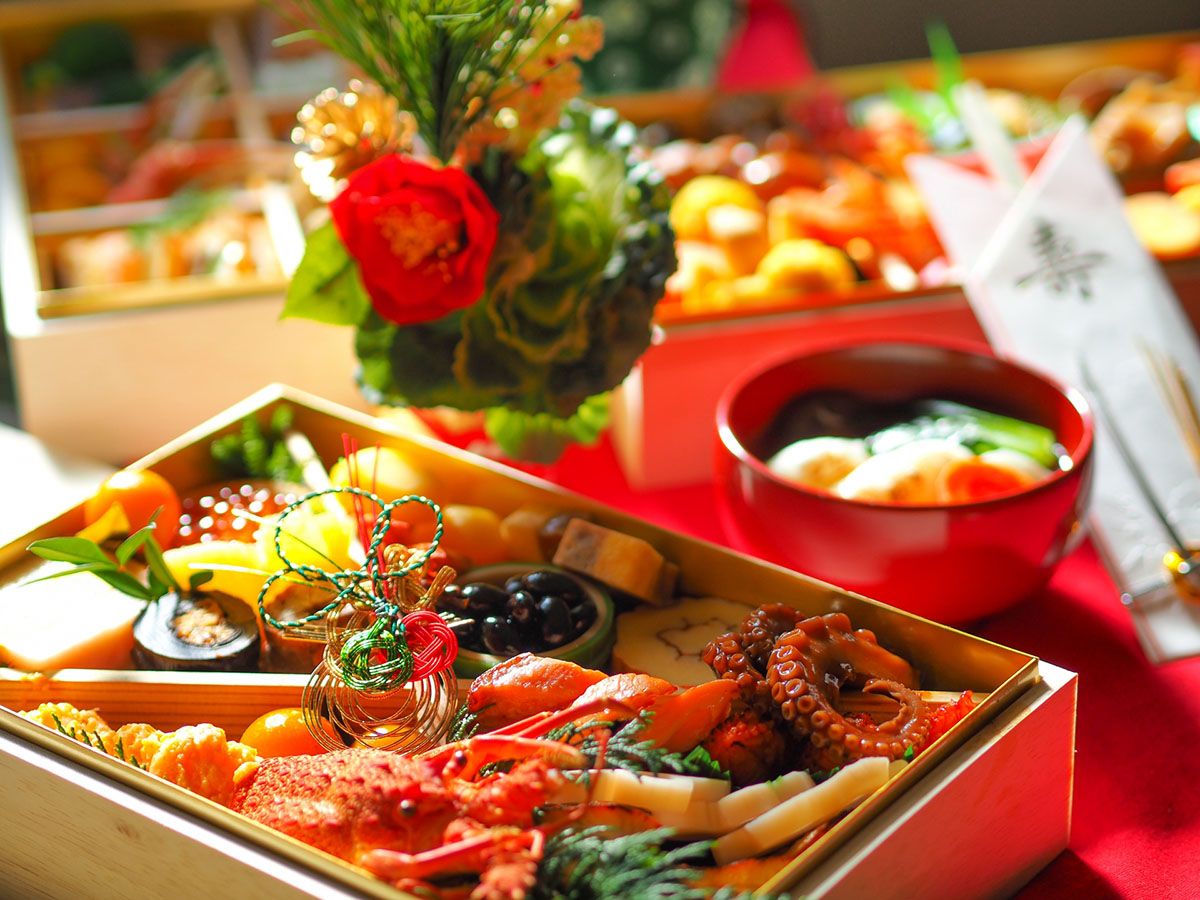
Kohaku Kamaboko (red and white fish paste)
The round shape of these resembles the first sunrise of the New Year. Further, the pink (red) and white colors of the kamaboko are considered to be a good omen as red is said to ward off evil and white signifies purity.Datemaki (rolled omelette mixed with fish paste)
In the olden days, people rolled documents that had important information into scrolls. Since this shape resembles a scroll, it signifies the flourishing of learning and culture.
Kuri Kinton (mashed sweet potatoes with chestnuts)
Literally meaning chestnut gold mash and symbolizes economic fortune. Therefore, hoping that eating this will bring good luck and prosperity for the New Year.
Kuromame (black beans)
These are eaten to pray for good health. "Mame ni hataraku" means to be a hard or busy worker.
Kobumaki (sliced dried herring or other fish wrapped in konbu seaweed & boiled)
One of the essential items, yorokobu means to feel happy and "kobu" simply refers to happiness. Another symbolism is that of longevity as seaweed is good for health.
Tazukuri (candied sardines or anchovies)
Gomame means small fish as well as 50,000 grains of rice. In the olden days, farmers used dried sardines for an abundant harvest in the fields. So tazukuri is eaten to pray for a good harvest in the coming year.
Kazu no Ko (Herring roe)
As it contains many eggs, it represents the hope for an abundant harvest and well-being of one's descendants.
Ebi (prawns)
Prawns or shrimp are on the plate to pray for a long life until you have a bent back and long beard (like a prawn)!
Download the Ikidane Nippon App: iOS / Android





